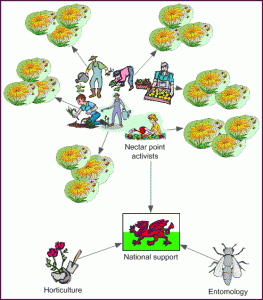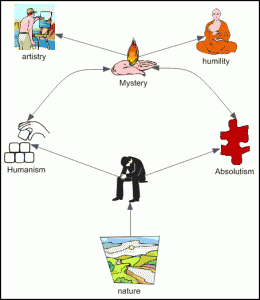1 Valuing urban wildlife
The history of wildlife conservation tells us that the approach to promote nature appreciation by urban dwellers has been to invite them to visit rural nature reserves. This has led to people thinking that the wildlife in their urban streets and gardens of is of lower value and has produced small groups of knowledgeable people who economically can visit and take advantage of these rural-based opportunities. The rural bias of nature conservation has compounded to isolate urban communities from nature who are in poverty without these resources, so resulting in greater environmental inequalities. Therefore, as a whole, urban populations loose out on the benefits of increased mental and physical health, access to green jobs and social benefits arising from contact with nature. Also, they are distanced from enhancing the biodiversity of their neighbourhood. Further, the framing of access to nature as being available only in special places, where it requires interpretation by experts, reinforces ideas that neighbourhood green spaces are not worth visiting or using as community assets.
The bigger issue is that regional, national, or global conservation initiatives are invariably developed by agencies launching projects from the top. They are typically identified and defined locally by an outside public agency, which has no direct investment in their success. A project is reviewed, refined, and its priority established within a bureaucratic organization. Legislation at some level is usually required to fund it, and there is usually no exit strategy for long-term continuity. This inevitably involves delay, red tape, political negotiation, and development of an expensive top-level management infrastructure. The top-down model provides little or no opportunity for local citizen input during the development phase or, often, afterward for local caretaking. Thus, local stakeholders commonly become alienated. This is in sharp contrast to community-based initiatives, where local people are already involved through caretaking. Often, this indigenous ownership extends to community education-related benefits for the long term. Community-based conservation is typically a grassroots effort, and one that is initiated because of specific concerns about an environmental or natural resource issue that affects a local population. This bottom-up conservation works well, because, in part, it is a collaborative process building on the caring relationships local activists have with the land. Top-down conservation projects often cost more, and seldom achieve as many benefits for the local communities they impact. The latter model has been described as the Protect and Enforce Model and the former model as the Love and Steward Model.
The challenge of living sustainably is therefore it to develop place-based Love and Steward Models that counteract the historical isolation of urban populations from their green infrastructure by starting within the green infrastructure itself and the people who define its value because they are in day to day contact with it. The aim is to promote ecological connectivity between families and their neighbourhoods, thereby realising the benefits of dwelling with nature by interacting with local biodiversity.
There are various ways this grass roots process of awareness and behaviour change can be supported centrally with information about street trees, garden bird feeders, ponds, bee tubes, and garden plantings for pollinators. The necessary information and merchandise is readily available but there has been no concerted nationally to focus this plethora of resources to promote urban campaigns to embed and network it into bottom-up growing schemes run by urban communities.
2 Objective
The objective of ‘Dwelling with Nature’ is to boost ecological connectivity between urban dwellers and their neighbourhood to secure maximum health, economic, social and ecological benefits from nature as an ecosystem service. To achieve this a network of stakeholder activists is essential for delivering resources and spreading ideas and practical know-how. The following scheme to establish and spread a nectar point network is just one example of how a Love and Steward model might be developed.
3 Nectar Point Network
There are few people who do not take more than a fleeting interest in butterflies and beetles and have the common sense to see that the availability of suitable food sources is limiting the insect life in their gardens. Some have spent a lifetime of exploration of a group of animals that truly can be said to have conquered the planet. The proposed scheme involves mobilising people of diverse ages and backgrounds to manage the biodiversity of local populations of insects. This will be achieved by establishing a network of streets and neighbourhoods that will boost insect populations through creating nectar points. A nectar point is a location e.g. a garden, park, school ground, shop front, wasteland, roadside verge or roundabout with plants that produce nectar for feeding insects. The network would focus families, schools, businesses, academic institutions and others to a common purpose of enhancing and sustaining local biodiversity and change the perception and experience of what is valuable in their urban surroundings.
This scheme would include incentives for behaviour change including rewards, such as best street, best young grower, best school/business contributor, best level of participation etc and for community and citizen participation through time banking. There would also be a strong element of citizen science to communicate know-how and ideas about how to carry out the plantings and assess their impact on wildlife
4 Habitat gardens
Gardens are a venue to exert and maintain control of nature in contrast to the world beyond the garden fence. Vegetation managed by citizens in their private gardens forms a significant component of all urban plant assemblages. Gardens cover about one-quarter of a typical UK city, and form up to a half of all urban green space coverage, as well as affecting patterns of global environmental change. Research shows that enhancing the quality of garden habitat is more likely to improve ecological connectivity than the specific establishment of green corridors across urban landscapes. Plant species composition, richness, evenness and density are continually influenced by human intervention in private gardens and floras are typically dominated by non-native species. Heavy inputs of nutrients and control of competition by gardeners leads to the persistence of species at lower densities than could occur in unmanaged populations. Human control over urban plant assemblages therefore appears to overwhelm geographic, historical and climatic variation among cities.
Making gardens for wildlife entails reorientating conventional ideas about planting to consider the garden as a habitat and answering the following questions.
Given that the optimal garden patch to establish a ‘habitat garden’ will comprise a group of adjacent gardens, what mechanisms exist for the creation and maintenance of ‘habitat gardens’ that transcend the boundaries of the individual plot?
What are the social drivers behind garden management decisions and how do we reverse social norms that reinforce the detrimental management of private gardens?
Ironically, the human capacity to change the environment is responsible for accelerated losses of ecosystem attributes and functions. However, this capacity to implement change can also be tapped to address conservation problems in residential landscapes. Residential areas offer a large, capable, and mostly untapped workforce that can assist in developing and tackling scientific questions and implementing, and subsequently monitoring, outcomes of management strategies. Such schemes can operate at a scale impossible to achieve in a landscape addressed by more traditional approaches to habitat restoration.
5 Support
It is important that schemes for enhancing garden insects should be structured around local nectar point activists who, as gardeners and communicators are well placed to provide information and plants to set up the network. A nectar points network is essentially a bottom up organisation where the starting point is a group of local activists with the skills of growing and linking with their local families and neighbourhoods who wish to participate in the scheme. Support would be provided through a focus of various local individuals, organisations and sponsors with the skills, knowledge and gardening resources to provide relevant horticultural and entomological information and spread ideas and know how. There is much on line support available as indicated by the following list of web references.
A forum is being organised to model the kind of on-line facility and resources needed to establish and sustain a Nectar Point Network.
This can be joined at:
http://www.tabup.com/dwellingwithnature
6 Web References
http://www.bristol.gov.uk/sites/default/files/documents/leisure_and_culture/parks_and_open_spaces/information_on_parks_and_open_spaces/Flower_Margin_Info_Meadows_0.pdf
http://www.biology.ufl.edu/courses/zoo6927/2011spring/Reed/Downloads/Citizen%20science%20Cooper%20et%20al%202007.pdf
http://www.seedengr.com/Scaling%20up%20from%20gardens%20biodiversity%20Conservation%20in%20urban%20environments.pdf
http://www.nonprofitquarterly.org/management/21815-bottom-up-versus-top-down-land-conservation.html
http://blog.interflora.co.uk/top-5-plants-and-flowers-to-attract-bees-to-your-garden/
http://www.rhs.org.uk/Gardening/Sustainable-gardening/Plants-for-pollinators
http://www.themelissagarden.com/TMG_Vetaley031608.htm
http://butterfly-conservation.org/292/gardening.html
http://www.butterflyfarm.co.uk/attraction/uploads/DOC4AF98EDD0010B.pdf
http://www.foxleas.com/PDF/Nectar%20plants%20for%20M.pdf
http://www.bbc.co.uk/news/science-environment-24555853
http://www.foxleas.com/insects_flowers.htm
http://www.wildaboutgardens.org.uk/thingstodo/allyearround/nectar-cafe.aspx
http://www.conservationevidence.com/individual-study/1768
https://www.sussex.ac.uk/webteam/gateway/file.php?name=goulson-perspectives-in-plant-1999.pdf&site=411
http://www.permaculture-wales.org.uk/index.php/guest-writers/125-a-guide-to-pollinator-friendly-gardening
http://www.bto.org/volunteer-surveys/gbw/gardens-wildlife/gardening/invertebrates
http://www.cals.ncsu.edu/course/ent425/library/labs/external_anatomy/anatomy_mouthparts.html
http://en.wikipedia.org/wiki/Nectar
http://en.wikipedia.org/wiki/Insect
http://www.biology-resources.com/insects-01.html
http://www.gutenberg.org/files/16410/16410-h/16410-h.htm
http://www.biodiversitylibrary.org/bibliography/22201#/summary
http://iloveinsects.wordpress.com/
http://www.cyberbee.net/biology/ch2/
http://archive.org/details/concerningthehab033579mbp
http://www.valeofglamorgan.gov.uk/files/Living/Environment/Biodiversity/Insects_leaflet.pdf
http://www.pollinator.org/Resources/CoE%20Gardens%20Curriculum.pdf
http://books.google.co.uk/books?id=Ki9djoKOm-0C&pg=PA1&lpg=PA1&dq=love+insects&source=bl&ots=ygFrPrWXZc&sig=v8v21KhILl1AJSvM8ux5fc_T9gw&hl=en&sa=X&ei=14NnUqPIMYmx0QXMy4GADw&ved=0CHIQ6AEwCTge#v=onepage&q=love%20insects&f=false

